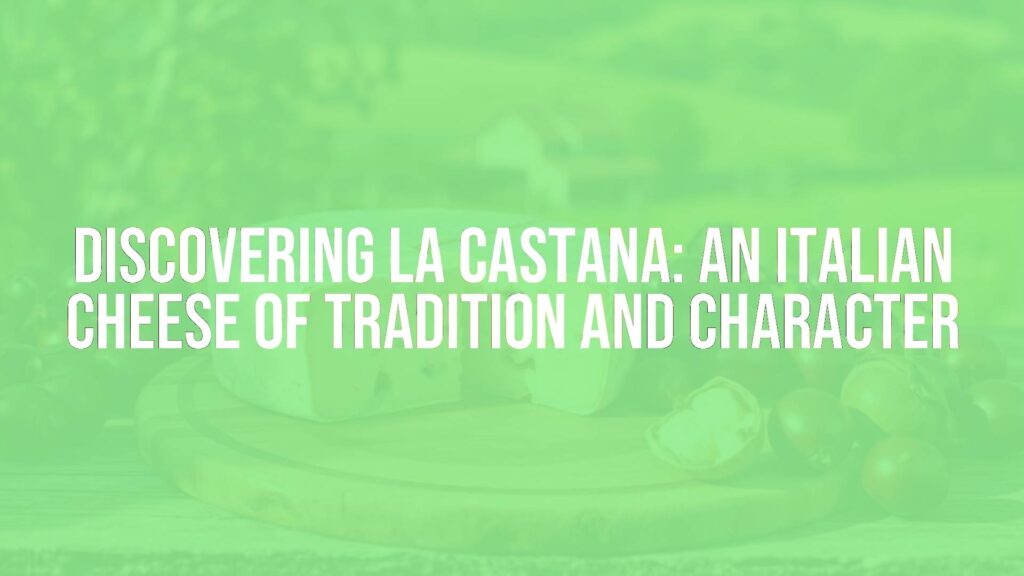Introducing La Castana
La Castana is an Italian cheese that reflects the agricultural heritage and culinary artistry of Northern Italy. Named after the chestnut forests (‘castagna’ meaning chestnut in Italian) that dot its region of origin, this cheese emerges from a rich tradition where local resources meet artisan craftsmanship. Though lesser-known outside Italy, La Castana holds a place of esteem among cheese connoisseurs and enthusiasts of regional specialties.
Distinctive Qualities and Sensory Profile
What makes La Castana particularly unique is its subtle infusion of chestnut-related aromas, owed to the feed and environment provided to the herds that supply its milk. Typically produced from high-quality cow’s milk, the cheese stands out for its semi-firm texture and strikingly creamy mouthfeel. The rind is often washed or gently brushed, lending it a thin but flavorful outer layer, while the interior paste remains pale ivory and dotted with occasional small eyes.
On the palate, La Castana offers a harmonious blend of buttery notes, delicate sweetness, and a faintly earthy undertone reminiscent of the chestnut groves that inspire its name. Aging intensifies these characteristics, providing a nuttier, more pronounced flavor.
Historical Roots and Production Methods
The origins of La Castana are closely tied to rural communities nestling the foothills of Piedmont and Lombardy. Historically, small-scale producers relied on local milk and traditional techniques, such as hand-molding and natural-rind aging in cellars perfumed by the woodland air. Seasonal cycles influenced both milk quality and the ripening process, giving each wheel subtle variations that narrate the story of its terroir.
Production methods have largely stayed true to tradition, despite some modern refinements. Carefully controlled temperature and humidity during maturation help develop the cheese’s distinctive texture and keeps its flavors in balance. Some versions are still matured on wooden shelves or with the addition of chestnut leaves, highlighting the connection between land and product.
Cultural Relevance and Enjoyment
La Castana’s presence is most strongly felt at regional fairs, autumn festivals, and family gatherings, where it is often enjoyed as part of a condividere (sharing) board. The cheese represents a celebration of the area’s natural bounty and local knowhow. Often, it serves as a bridge between past and present, supporting agricultural communities and artisanal dairies committed to heritage preservation.
Traditional Pairings and Serving Suggestions
La Castana’s gentle, nutty complexity makes it a versatile companion to a variety of foods and wines. Traditionally, it might be savored on fresh rustic bread, drizzled with a touch of local honey, or accompanied by roasted chestnuts for a truly regional experience. In contemporary settings, it shines when paired with figs, ripe pears, or thinly sliced cured meats such as prosciutto crudo.
For wine pairings, La Castana is well-matched with medium-bodied reds or dry whites from Piedmont, allowing its subtle richness to take center stage. It is also commonly served as part of antipasti platters or grated over warm polenta, enhancing both texture and flavor with its creamy, meltable qualities.
Celebrating a Hidden Gem of Italy
While La Castana may not enjoy the global acclaim of cheeses like Parmigiano Reggiano or Gorgonzola, its strong roots in Italian tradition, unique characteristics, and culinary adaptability make it a cherished gem for those who seek out authentic regional flavors. Whether enjoyed alone or as part of a vibrant meal, La Castana offers a delicious reminder of the enduring relationship between Italy’s landscapes and its cheese-making heritage.

